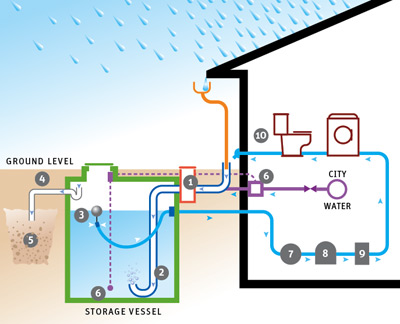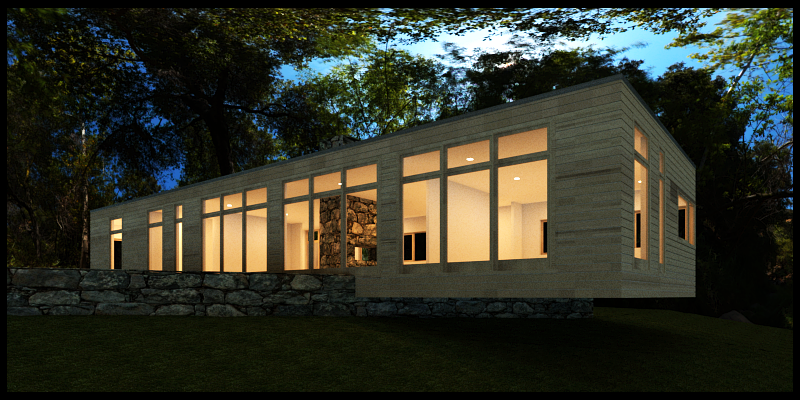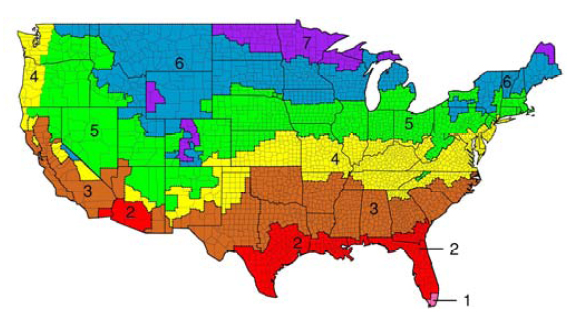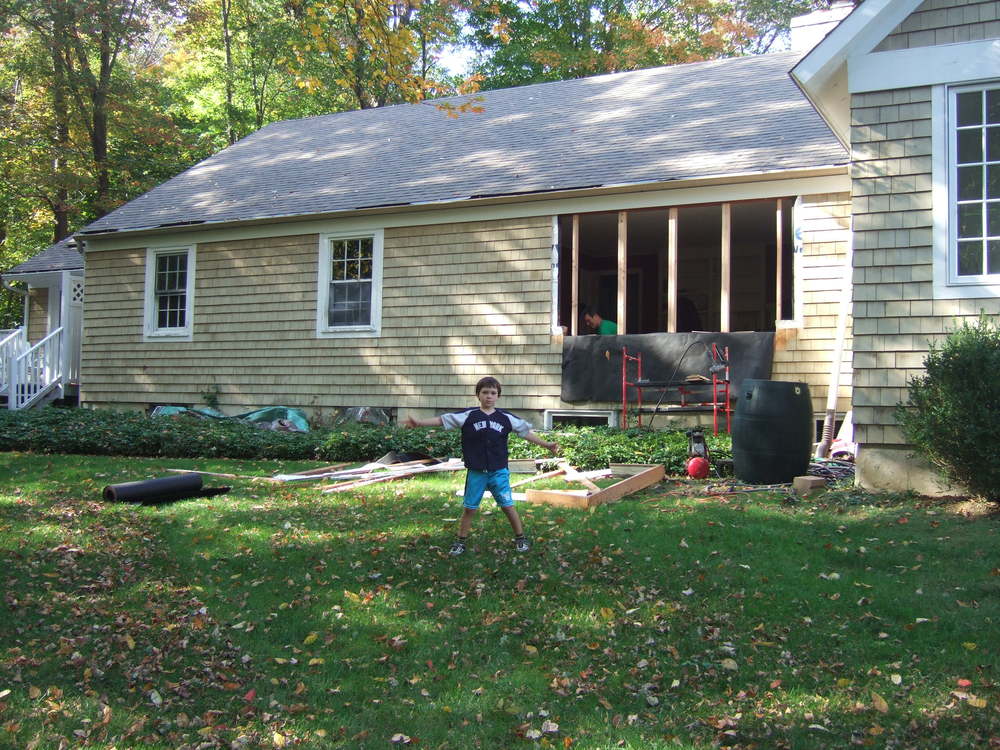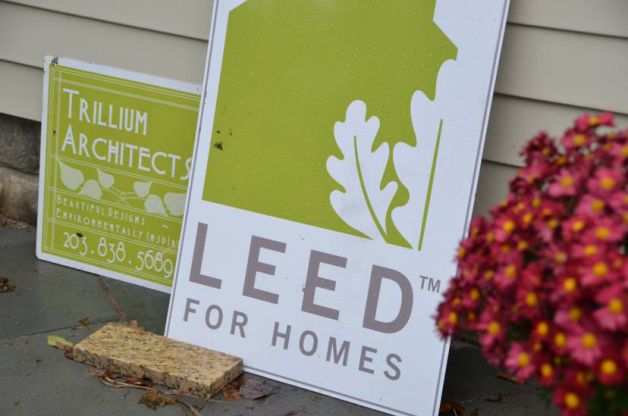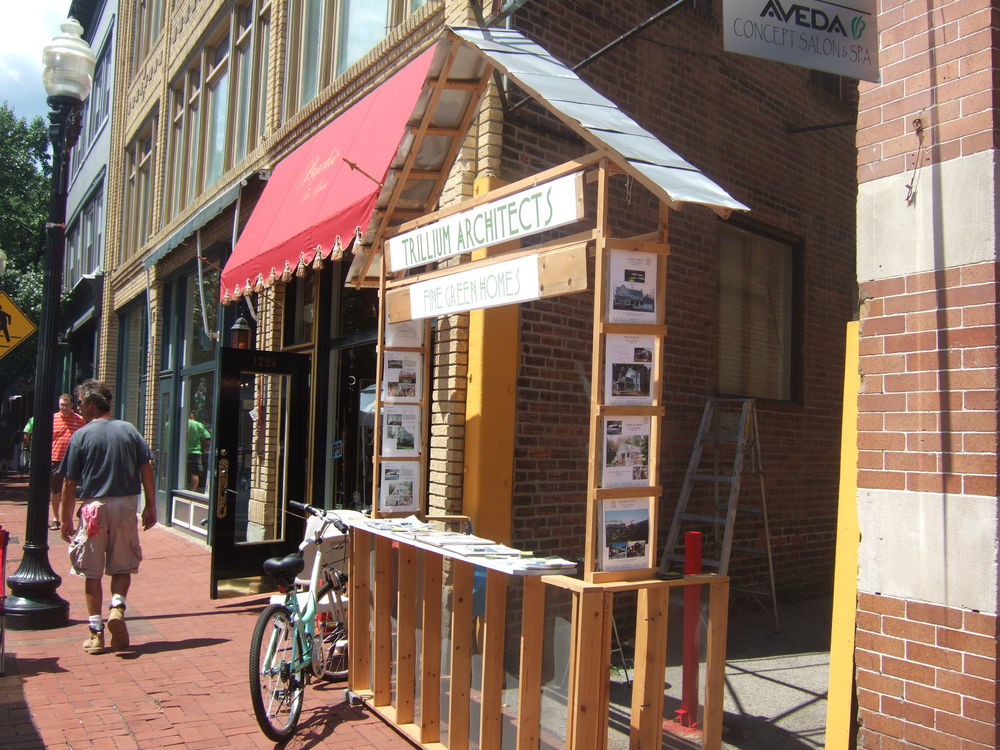I get a lot of questions about cooling a home and HVAC in general. We specify air-to-air heat pumps on most of our jobs these days. They are similar to 'geothermal' which is air-to-water or air-to-ground heat pump technology, except you don't have to dig a hole in the ground.
We find the air-to-air heat pumps (also called 'splits or 'minisplits'), more efficient, much less expensive and less temperamental to install. People still say 'what about Geothermal?' Well, we specified our last geothermal systems about 4 years ago and I don't see any reason why would specify one again with these great units on the market!
Here is a great article by Alex Wilson of Environmental Building News that compares cooling options of all types:
Choosing an Air Conditioner
Understanding the options with room air conditioners, central air conditioners, and heat pumps.
 The outdoor unit of a Daikin mini-split air-sourceheat pump in Putney, Vermont. Click to enlarge.
The outdoor unit of a Daikin mini-split air-sourceheat pump in Putney, Vermont. Click to enlarge.Photo Credit: Alex Wilson
I have never owned an air conditioner, and I don’t have any immediate plans to change that. But if I did, what would I look for?
Answer:
For only occasional use and when you don’t want to spend more than $1,000, the options are limited to room air conditioners, which are most commonly installed in windows. These cool the rooms in which they are installed, though in a small house or one that’s very-well-insulated and tight, a single window unit may be able to cool much of the house.
Most room air conditioners are either installed in a double-hung window or in an opening in the wall specially created for the air conditioner. Special models are available that can be used in casement windows, though installation is trickier.
Window air conditioners are usually installed in the late spring or summer and removed in the fall. Because they don’t seal tightly in the window, they should not be left in place during the winter months, as they will result in cold drafts. Room air conditioners that fit into custom openings through the wall may be left in place as long as they are fairly well-sealing (most are not), and if they are removed the opening should be carefully sealed for the winter.
For whole-house cooling, central air conditioners or heat pumps are used, and chilled air is distributed through ducts. Heat pumps offer the advantage of being able to provide both cooling and heating—by reversing the refrigerant cycle seasonally. If I were putting in an air conditioning system and my budget allowed, I would install one of the new-generation mini-split air-source heat pumps. (Very significant for those of us in the Northeast, the cost of delivered heat from these heat pumps is usually lower than that of oil.)
Room air conditioner efficiencies and performance
Room air conditioner performance is reported as the Energy Efficiency Rating (EER), which is a measure of the energy output in Btus (British Thermal Units) per hour divided by the energy input in watts, assuming standard conditions (usually 95°F outside temperature and 50% relative humidity).
Federally mandated efficiency requirements for room air conditioners vary depending on size, ranging from an EER of 8.5 for models over 20,000 Btu/hour to 9.8 for models in the 8,000 to 14,000 Btu/hour size. To meet the Energy Star standard in these size categories, the EER must be a minimum of 9.4 and 10.8, respectively. The thresholds are somewhat more relaxed for the smallest units.
Today’s best room air conditioners have EERs over 11.5, but relatively few exceed 10.8.
SEER ratings for central air conditioners and heat pumps
Central air conditioners and air-source heat pumps in cooling mode are typically rated on a seasonal bases using the seasonal energy efficiency rating (SEER). This is the total seasonal cooling output in Btus divided by the watt-hours of electricity consumption.
Central air conditioners and air-source heat pumps must have SEER ratings of 13.0 or higher. On January 1, 2015, those standards are scheduled to be tightened. To qualify for the Energy Starstandard, central air conditioners and air-source heat pumps both must have SEER ratings of 14.5 for split systems (separate indoor and outdoor components) or 14.0 for packaged units.
The best central air conditioners and air-source heat pumps today have SEER ratings above 22.
Moisture removal with air conditioners
All air conditioners remove moisture, as described in last week’s blog. While there are no federal requirements or measurement standards for moisture removal, most manufacturers list moisture removal in pints of water per hour. As a first step, you must properly size an air conditioner to achieve good moisture removal (see below). If humidity is a problem, look for models that are effective at moisture removal. Models with variable-speed motors are typically more effective at moisture removal.
Discuss moisture removal with a dealer or air conditioning contractor. Your particular situation and humidity conditions may inform the product recommendations.
Sizing air conditioners and heat pumps
Particularly with central air conditioners and heat pumps, sizing is key to successful performance. With an oversized unit, frequent on-off cycling will occur, efficiency will drop, and moisture removal will be poor. Sizing requires carrying out detailed cooling load calculations; it is not something that should be done using rules of thumb. The sizing of ducting with a central unit is also very important, both for efficient operation and noise control.
Making decisions
A knowledgeable air conditioner salesperson should be able to help you pick out a quality room air conditioner. Insist on an Energy Star-listed model, ask about moisture removal, and then consider technical support, warranties, manufacturer reputation, and service in making your buying decision.
With central air conditioners and heat pumps, talk with air conditioning contractors and suppliers, but be aware that specific contractors may push only those products they are most familiar with or manufacturers they represent. The latest mini-split air-source heat pumps from such manufacturers as Mitsubishi, Daikin, Panasonic, and Fujitsu offer—in my opinion—the best option available today.
If the air conditioning contractor you contact doesn’t provide these systems, I would suggest that you seek out other contractors or suppliers before proceeding with a purchase.
The information above and in our GreenSpec guide should help you find the right central air conditioners and heat pumps.
Alex is founder of BuildingGreen, Inc. and executive editor of Environmental Building News. He also coauthored BuildingGreen’s special report on windows that just came out. To keep up with Alex’s latest articles and musings, you can sign up for his Twitter feed.
Posted by Alex Wilson on July 11, 2012






 are homes in the Northeast ever designed to recycle graywater? are there resources for my builder/architect to come up to speed on it if so?
are homes in the Northeast ever designed to recycle graywater? are there resources for my builder/architect to come up to speed on it if so? 